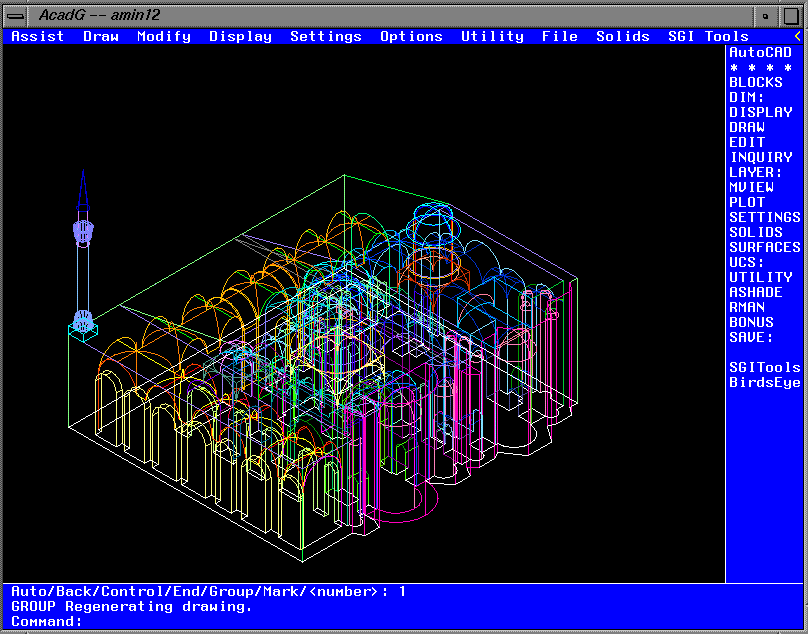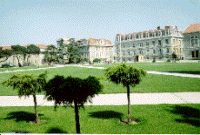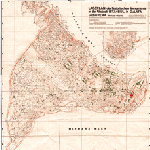
History of the Project
Over the past several years, Professor Ahmet Cakmak, of Princeton
University's Department of
Civil Engineering and Operations Research
has undertaken the structural analysis, under earthquake loads,
of the Hagia Sophia. The Hagia Sophia is a major museum (formerly
church and mosque) in
Istanbul, Turkey, built by the Emperor Justinian during the 6th century
AD. Professor Cakmak has sought to
determine the susceptibility of the structure, specifically its large
dome and arches, to collapse due to the earthquakes that often strike
that part of the world.
 As an extension of that work into the architectural realm, he and
Professor Mark of the Civil Engineering department
offered a class in the spring of 1995 with the goal of studying Byzantine structures from a structural and an
art-historical perspective. Over spring break, the class traveled to
Istanbul to continue their studies, where they were generously hosted
by Bogazici
University. The university accommodated the class with lodging in
the President's guest house
as well as the resources of its Kandilli Institute.
One of the goals set forth in the class was
for students to construct three-dimensional models of specific Byzantine
structures utilizing the computer drafting software AutoCAD. This was the
first step
towards a long term goal of creating a full model of the topography of
ancient Constantinople, with models of many Byzantine buildings in place.
Over the summer of 1995, several buildings were modeled in AutoCAD, and
then texture mapped.
As an extension of that work into the architectural realm, he and
Professor Mark of the Civil Engineering department
offered a class in the spring of 1995 with the goal of studying Byzantine structures from a structural and an
art-historical perspective. Over spring break, the class traveled to
Istanbul to continue their studies, where they were generously hosted
by Bogazici
University. The university accommodated the class with lodging in
the President's guest house
as well as the resources of its Kandilli Institute.
One of the goals set forth in the class was
for students to construct three-dimensional models of specific Byzantine
structures utilizing the computer drafting software AutoCAD. This was the
first step
towards a long term goal of creating a full model of the topography of
ancient Constantinople, with models of many Byzantine buildings in place.
Over the summer of 1995, several buildings were modeled in AutoCAD, and
then texture mapped.
During the fall semester of the 1995 - 1996 school
year, another class was offered in conjunction with the project, taught
this time by Professor Cakmak and Professor Curcic of the Art and
Archeology Department. The class included both engineers and humanities
majors, and sought again to study both the structural and the artistic
aspects of Byzantine structures. During Princeton's fall break, the
class traveled to Istanbul where they were again hosted by Bogazici
University and worked with Civil Engineering and Earthquake Engineering
students to study various structures within the city.
In the spring of 1996 as independent work, four Princeton students
continued the project,
using the Pro/ENGINEER software package to create new models. That work carried
on through the summer of 1996 when another trip to Istanbul was made,
focusing on the texture mapping of the new models.
 Many pictures in this site were copied
Many pictures in this site were copied
from a tour of Istanbul, maintained by ITU in
Istanbul.
Return to Home Page
 As an extension of that work into the architectural realm, he and
Professor Mark of the Civil Engineering department
offered a class in the spring of 1995 with the goal of studying Byzantine structures from a structural and an
art-historical perspective. Over spring break, the class traveled to
Istanbul to continue their studies, where they were generously hosted
by Bogazici
University. The university accommodated the class with lodging in
the President's guest house
as well as the resources of its Kandilli Institute.
One of the goals set forth in the class was
for students to construct three-dimensional models of specific Byzantine
structures utilizing the computer drafting software AutoCAD. This was the
first step
towards a long term goal of creating a full model of the topography of
ancient Constantinople, with models of many Byzantine buildings in place.
Over the summer of 1995, several buildings were modeled in AutoCAD, and
then texture mapped.
As an extension of that work into the architectural realm, he and
Professor Mark of the Civil Engineering department
offered a class in the spring of 1995 with the goal of studying Byzantine structures from a structural and an
art-historical perspective. Over spring break, the class traveled to
Istanbul to continue their studies, where they were generously hosted
by Bogazici
University. The university accommodated the class with lodging in
the President's guest house
as well as the resources of its Kandilli Institute.
One of the goals set forth in the class was
for students to construct three-dimensional models of specific Byzantine
structures utilizing the computer drafting software AutoCAD. This was the
first step
towards a long term goal of creating a full model of the topography of
ancient Constantinople, with models of many Byzantine buildings in place.
Over the summer of 1995, several buildings were modeled in AutoCAD, and
then texture mapped.

 Many pictures in this site were copied
Many pictures in this site were copied